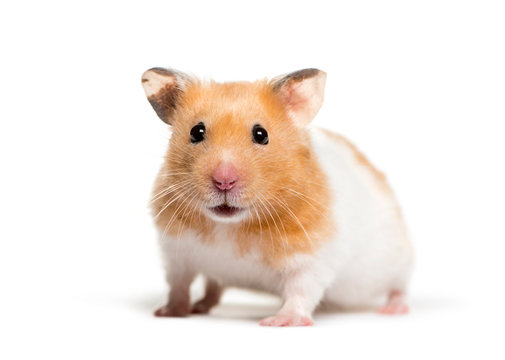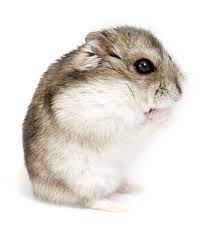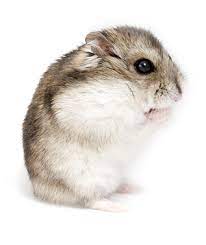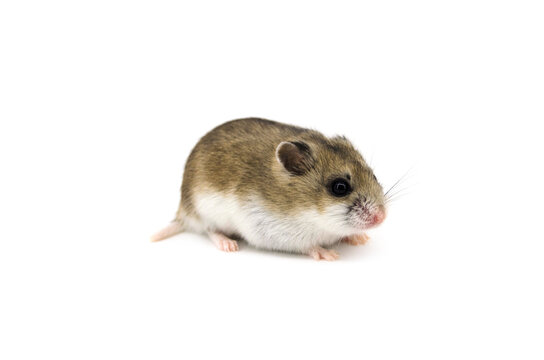How to take care of hamsters ? – Choosing the right type of hamsters
Hamster Care Sheet
How to take care of hamsters ? What do I need for my pet hamster? Now that you have decided on a pet hamster you should have all the supplies necessary before bringing your pet home. This hamster care sheet will guide you in having everything you need. Remember, hamsters are chewers, wanderers, and burrowers so choose the home accordingly.
- Choosing a type of hamster
- Buying your hamster
- Your hamster’s home
- Feeding your hamster
- Getting to know your hamster
- Exercise
- Cleaning
- Health problems
Habitat You will need a cage or aquarium that is at least 15 inches long by 12 inches high for one hamster or two dwarf hamsters. Get the largest size possible. The bigger the cage the happier your pet will be. Bedding or substrate for the bottom of the cage where your pet can burrow and hide. A water bottle or water dish. You will have less mess to clean up if you use a stoppered bottle in place of a water dish. A food dish. Hide and sleeping areas for your hamster. Toys such as an exercise wheel, ramps, and tunnels so your pet hamster can exercise and explore.
Food and Supplements Hamster food, either pellets or mixed seeds and grain. Fresh food like acorns, apples, bananas, green beans, broccoli, cabbage, carrots, cauliflower, celery, corn, zucchini, cucumbers, grapes, kale, oranges, peas, spinach, sweet potatoes, and turnips. Vitamin, mineral, and calcium supplements. Treats to add variety to your pet’s diet.
How to take care of hamsters
An essential introduction to hamster care
Hamsters can seem like a cute and cuddly option when you are looking for the perfect pet, but how much do you actually know about hamster care, and how should you prepare to welcome a hamster into your home?

In this guide to hamster care, we give you the essential info you need to get started as a hamster owner! Contents:
- Choosing a type of hamster
- Buying your hamster
- Your hamster’s home
- Feeding your hamster
- Getting to know your hamster
- Exercise
- Cleaning
- Health problems
1. Choosing the right type of hamster for you
The most common type of hamster that people have as a pet is the Syrian hamster, which is also often referred to as the Golden hamster. This little rodent originally comes from the northern regions of Syria, and the south of Turkey. It is considered to be vulnerable as a wild species as its habitat is under threat from destruction by humans. There is no such threat to Syrian hamsters in captivity.
Another popular type of pet hamster is the dwarf hamster. There are three types of dwarf hamsters that are related, and that you will normally see in pet stores, the Roborovski, and the two types of Russian dwarf hamster, Winter White and Campbell’s. The fourth type of dwarf hamster is the Chinese; this is not related to the other types of dwarf hamster.
Much like people, different hamsters are suited to different situations and homes. So the first decision you need to make is what type of hamster you want, and which is best suited to you and your circumstances.
Introduction
So you’re toying with the idea of becoming a hamster parent—what an exciting endeavor! This article aims to illuminate the labyrinthine process of choosing the perfect hamster to match your lifestyle.
Why Own a Hamster?
Benefits of Owning a Hamster
Hamsters are not just adorable but also low-maintenance pets. They offer companionship without the rigors attached to other pets like dogs or cats. Isn’t it intriguing how such a tiny creature can bring immense joy?
Factors to Consider
Lifespan
The lifespan of a hamster can range from 2 to 3 years. Will you be committed for this duration?
Temperament
Some hamsters are sociable, while others prefer solitude. Which suits your lifestyle?
Maintenance Level
Each hamster type has different care requirements. Are you up for the challenge?
Popular Types of Hamsters
Syrian hamsters


The first thing to remember about Syrian hamsters is that they should always be kept by themselves; they are very territorial and will fight with other hamsters. Syrian hamsters are the largest of the captive hamster breeds and they are often the most popular as pets. They have a lively personality and can be really fun to watch and interact with.
If you handle them from an early age Syrian hamsters can be trained well, if you have a little patience. They are generally slower paced than dwarf hamsters so they are easier to keep up with, especially during the training process. The average lifespan for a Syrian hamster is 2 to 2.5 years, although like most animals, there are some individuals who live longer than this. As an adult the average size of a Syrian hamster is 5.5 inches. Syrian hamsters are popular with novice hamster owners, and younger children, as they tend to be easier to handle and tame.
Dwarf hamsters

Dwarf hamsters are, as the name suggests, smaller than Syrian hamsters. They can normally be kept in a cage with other dwarf hamsters but you still need to check for any signs of upset or aggression, at which point they may need to be separated. The Roborovski dwarf hamster is the smallest of the dwarf hamsters, and doesn’t grow much more than 3 inches in length, even as an adult. Roborovski dwarf hamsters are very fast and active; they have often been known to run as far as 100 miles per night on their hamster wheel. These adorable little creatures live for an average of 3 to 3.5 years.
Roborovski Hamsters

Roborovski Hamsters, colloquially known as “Robos,” represent the epitome of vivacity and diminutive charm within the hamster world. Originating from the arid expanses of Central Asia, these micro-sized wonders have captivated hearts globally. Characterized by their sand-colored fur and incandescent eyes, Roborovski Hamsters are distinguished not just by their petite size but also their frenetic energy.
Unlike their larger Syrian counterparts, Robos are not partial to human interaction in the form of cuddling or holding. Instead, they offer a different kind of engagement— one that’s akin to observing a whirlwind of activity safely encapsulated within the four walls of their habitat. They’re agile, fast, and require a keen eye to monitor, especially since their nocturnal habits mean most of their escapades occur under the cloak of darkness.
In terms of care, Roborovski Hamsters demand an environment rich in opportunities for burrowing and exploration. A complex labyrinth of tunnels and toys will keep their agile minds and bodies stimulated. As for diet, they thrive on a mix of hamster pellets, fruits, vegetables, and the occasional protein from mealworms or boiled eggs.
While their lifespan of 3 to 3.5 years is marginally longer compared to other hamster types, their care regimen is less taxing. The Robos are robust, less prone to disease, and generally easier to care for if you respect their need for space and independence.
In summary, Roborovski Hamsters are best suited for those who derive satisfaction from observation and minimal interaction, appreciate the nuances of a small pet’s behavior, and are willing to accommodate their penchant for nocturnal activity. Investing in a Robo is akin to acquiring a pocket-sized bundle of ceaseless energy, requiring attention to detail but offering endless moments of silent companionship.
Chinese Hamsters

Chinese hamsters, scientifically known as Cricetulus griseus, stand as one of the most petite and distinctive members of the hamster family. These diminutive rodents are cherished for their gentle disposition and ease of care, making them a popular choice for pet enthusiasts around the world. Let’s delve deeper into understanding the intricate world of Chinese hamsters.
Physical Characteristics
Size and Weight: Chinese hamsters typically measure between 8-13 centimeters in length and weigh around 30-45 grams, showcasing a notably slender physique compared to other hamster species.
Fur: Their fur is short, and showcases a brown-grey dorsal color with a dark dorsal stripe running across their spine, fading into a creamy white on their underbelly.
Life Span: Generally, Chinese hamsters live for 2-3 years, a duration that can extend with optimal care and a healthy diet.
Behavior and Temperament
Nocturnal Nature: Like many of their rodent cousins, Chinese hamsters are nocturnal, which means they are more active during the night.
Solitary: They are known for their solitary nature, preferring to live alone to prevent potential territorial disputes.
Friendly and Tameable: Despite their solitary nature, they are generally friendly and can be tamed with consistent and gentle handling, making them ideal for households.
Habitat and Diet
Habitat: When setting up a habitat for a Chinese hamster, it’s essential to provide a space with enough room for them to explore, including hideouts, tunnels, and a wheel for exercise.
Diet: Their diet should primarily consist of hamster pellets supplemented with fresh fruits, vegetables, and occasional protein sources such as mealworms and boiled eggs.
Reproduction
Breeding: Chinese hamsters reach sexual maturity at 2-3 months of age. The gestation period lasts for about 18-30 days, after which a litter of 4-6 pups is usually born.
Conclusion
Chinese hamsters remain a delightful choice for pet lovers owing to their gentle temperament and relatively low-maintenance care requirements. Their curious nature coupled with a distinctive physical appearance makes them an endlessly fascinating companion in households. Before bringing one home, ensure to gather substantial knowledge and prepare a comfortable habitat to welcome your new pet lovingly and responsibly.
FAQs
What are the different types of hamsters that one can choose from?
When choosing a hamster, you typically have five main types to consider: the Syrian hamster, the Roborovski hamster, the Chinese hamster, the Campbell’s Dwarf hamster, and the Winter White Russian dwarf hamster. Each type has its own unique characteristics and requirements.
What are the key factors to consider when choosing the right type of hamster?
When choosing the right type of hamster, you should consider factors such as the hamster’s size, temperament, and lifespan. It is also important to take into account your living situation and how much time and resources you can dedicate to caring for the hamster. Researching and understanding the specific needs of each type of hamster will help you make an informed decision.
Are there any hamsters that are more suitable for beginners?
Yes, the Syrian hamster is often recommended for beginners because they are relatively easy to handle and care for. They are solitary animals, which means you only need to house one per cage, avoiding potential conflicts that can arise with other types of hamsters that may live in groups.
What kind of living environment does each type of hamster prefer?
Different hamsters have varying habitat preferences. Syrian hamsters prefer larger spaces with ample room to explore and play. Dwarf hamsters, including Roborovski and Campbell’s, appreciate environments with plenty of hiding spaces and tunnels that mimic their natural habitats. Chinese hamsters require a moderately spacious area with vertical space for climbing. It’s essential to research the specific needs of the hamster type you choose to ensure a comfortable and stimulating environment.
How can I ensure the good health of my chosen type of hamster?
To ensure your hamster’s good health, provide a clean habitat with proper ventilation, a balanced diet, and fresh water. Regular veterinary check-ups can help monitor their health status. Moreover, offering them opportunities for physical exercise, such as a running wheel, and mental stimulation, like puzzles and toys, will contribute to their wellbeing. It’s advisable to learn about the specific needs and potential health issues of the particular type of hamster you choose to adopt.
